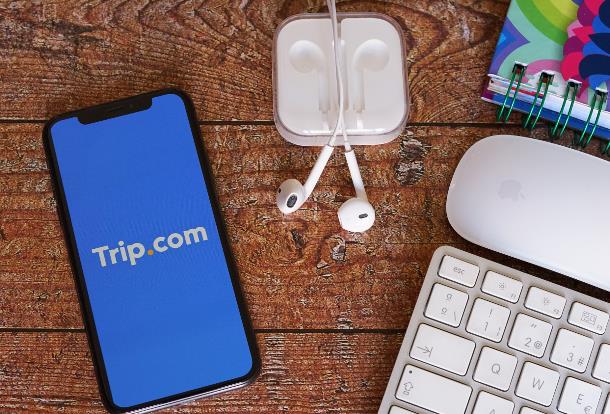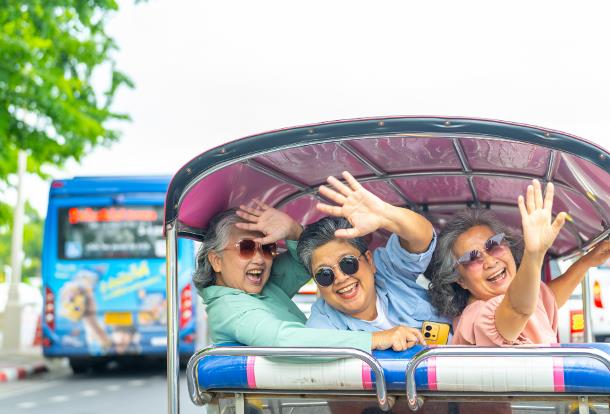ChinaTravelNews, Ritesh Gupta - Selling travel products is particularly complex compared to traditional online retail - the inventory is dynamic, finite, and perishable, which adds complexity to developing offers and messaging as well as real-time communication with travellers.
On top of the unique intricacies of online retail, today’s demanding customers expect travel retailers to engage with them on a personalized level.
A core challenge lies in matching available inventory with the right buyers at the right time - and this requires an approach that applies big data and predictive analytics to marketing and merchandising.
Travel marketers in China acknowledge this, and are keen on exploring ways to capitalize on the promise of personalisation.
A senior hotel marketing executive in China recently told us: “We do follow account activity, and are working to improve real-time pricing to a set of customers based on website personalisation.”
Another executive with an OTA shared plans and intended to work out a “personalised experience for users when they are searching and reading information without log-in”, hoping to “replicate what Google and Netflix do”. This entity is already using machine learning to analyze and study user behavior at different times (at day or night) and at different places (at home, in the office or while travelling) to identify a user across different platforms.
Nascent stages
As an expert in this arena, Dublin-based Dave O’Flanagan, co-founder and CEO of Boxever says most travel companies are still in the early stages of figuring this out and executing on it, so there’s still a way to go before travellers get that true one-to-one experience across the full traveller lifecycle.
Predictive marketing can be an asset, provided there is infrastructure in place to accumulate relevant data. This can be the backbone of crafting positive experiences during various stages of the customer lifecycle.
“Our company does not just collect shopping data, but uses additional supporting data to supplement transactional data in an effort to convert a negative or an indifferent experience into a pleasant one. For instance, if a traveller flying with an airline brand has suffered on multiple occasions due to flight rescheduling or delays, there are now ways to identify this passenger and flag them so that the airlines can try to make up for the negative experience, perhaps with a seat upgrade or another small token of gratitude. Personalisation is about recognizing the flyer, and making them feel special,” said O’Flanagan.
So is personalisation only being managed manually?
O’Flanagan says there are certain aspects that are being managed manually, and some that are automated. However, some automated processes don’t always make accurate recommendations when it comes to personalisation. Machine learning algorithms can overcome this issue, by analyzing which offers were most effective. If an offer didn’t resonate with a user, the algorithm has the ability to take that intelligence and integrate it to create more accurate offers in the future.
O’Flanagan says the focus should be on preparing a single view of the customer. “The future lies in offering a unique, personalised experience. So it could be the ad seen, search on the website, information accessed via mobile, email content, or the in-destination experience for example. From the point of acquisition every interaction across every touchpoint should be personalised. This is tremendously difficult to do,” he says. Today, travel companies are making use of analytics to reduce the frequency of shopping cart abandonment, improve email targeting and optimize the contact center experience. “But the level of personalisation is segment-based, across call center operations, web channel, email and mobile.”
From an organization’s perspective, setting up a single view of the customer requires different departments to work together toward a common objective. Organizing this initiative, aligning on common goals, finalizing resources and deciding on the ownership of the new single customer view can be difficult, as these are all new initiatives for many of these departments, which have traditionally worked within their own silo.
“Taking a customer-centric approach really means transforming how the company thinks about its data, resources, and operations,” says O’Flanagan.
Being smarter with personalisation
There are definite cases where travel organizations are already reaping rewards.
For instance, among carriers in Asia, Tigerair has managed to curtail shopping cart abandonment and improve the online conversion rate. The airline, in conjunction with Boxever, chose to work on an online profile (database of users) to support the performance of Tigerair.com. With web personalisation efforts included throughout the customer web journey, the airline witnessed significant uplift in the conversion rate.
There are several areas where organizations are trying to be smarter:
· Knowing the identity of a user: The technology and analytics used to identify a digital customer are going through an interesting phase. There is talk of using probabilistic and deterministic methods.
· Apt product mix for revenue optimization: Organizations are also looking at understanding the search value and product demand in order to make their pricing strategy more effective. O’Flanagan says there can be many iterations – analytics can drive different pricing strategies for certain routes in real-time and product grouping can be done. Eventually, a tailored offer crafted individually for each customer will be available. “But airlines have to be careful about the offering if they create different bundles for different segments. For instance, there are two passengers on the same flight, both in economy class, may have different values to the brand. The value that is being offered needs to be defined beyond the price of a ticket.”
· Real-time pricing: As for real-time pricing for a particular product that is being offered to a particular segment (based on analytics for web personalisation), O’Flanagan says no company is doing it right now.
· Relevant content: Airlines can create an interaction timeline for each user when they visit a website. Using analytics and predictive marketing, known and unknown site visitors can be served dynamic content based on who they are and what their current context is.
Don’t waste a customer’s time: “What I find frustrating, and I imagine many travellers do too, is having to start from scratch each time I want to plan a trip, even when I'm booking with the same provider. Airlines, OTAs, and hotels that are more mature in their personalization endeavours make an effort to eliminate friction in the planning and booking process,” pointed out O’Flanagan. “For example, if I always fly from Dublin, defaulting the departure airport to Dublin eliminates one step for me. Knowing I have insurance and I stay in a particular hotel all helps reduces the number of options that I need to make. We’ve seen airlines that leverage this data to improve the experience have happier customers that convert better. It’s a win-win for both parties,” says O’Flanagan.
Identifying digital customers is becoming much more important as devices and channels proliferate. Right now there’s a long way to go before companies fully understand all the different ways a traveler engages with a brand.
O’Flanagan’s team has spent a lot of time working on multi-channel, probabilistic matching and there’s huge value in it for both analytics and personalization but it’s not easy to combine this probabilistic data with CRM and transactional (deterministic) data in way that uses the data effectively in different contexts.
“Right now the strike rates for generic matching based on cookies, IP and other environmental factors are pretty unimpressive but if you can look at booking information, search behavior and other travel-specific factors, the match rate increases significantly. This is where travel-specific solutions have the edge,” he says.




